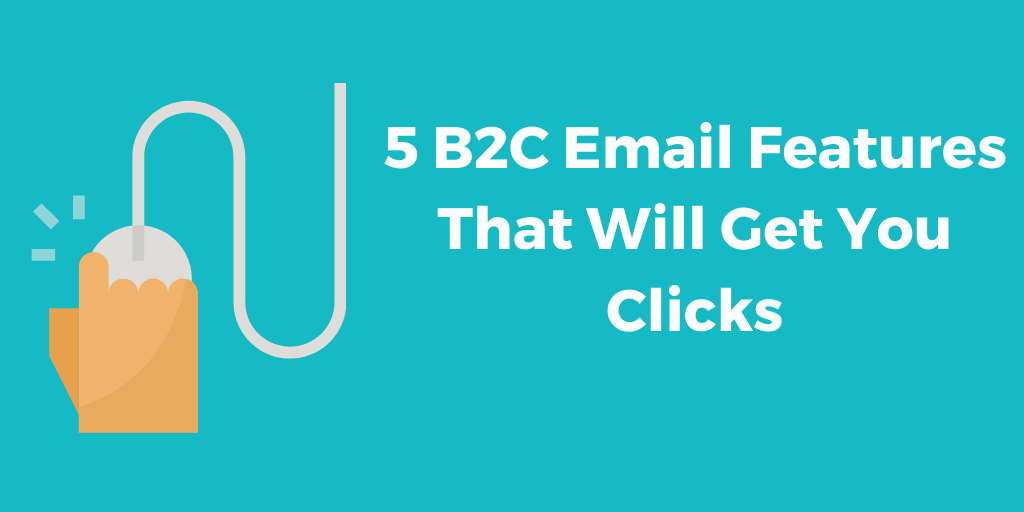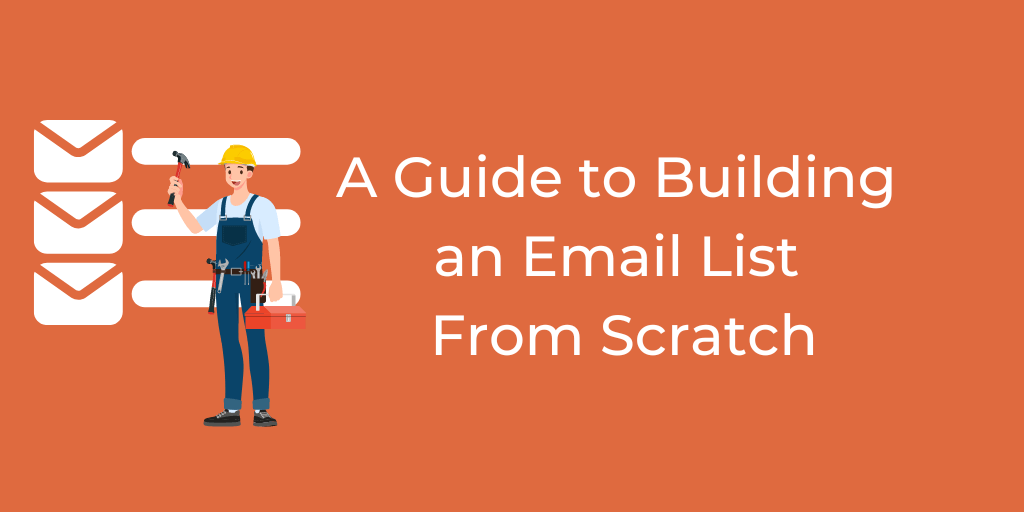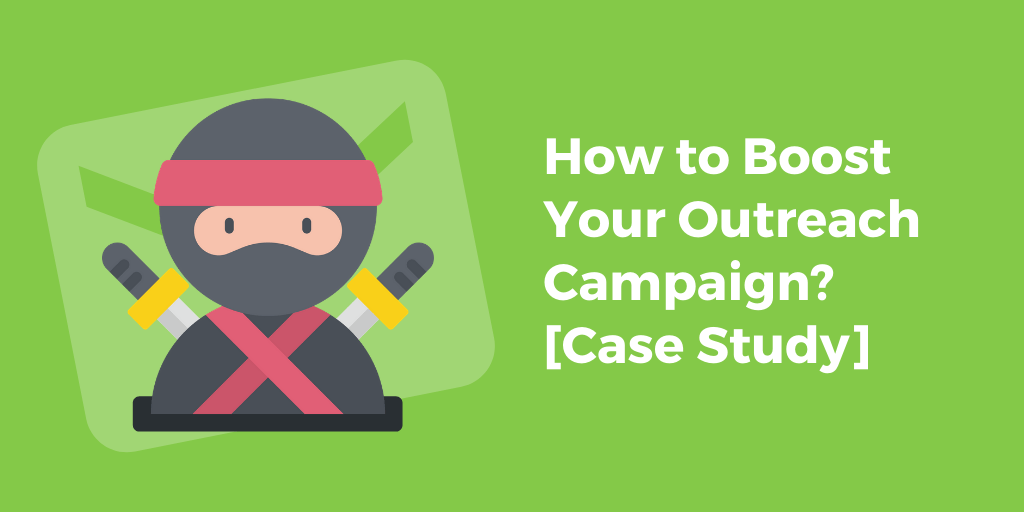
Quick links
Email is still one of the most useful and affordable marketing tools that businesses can use. It’s a great way to build long term relationships with new and existing customers, share useful content, and increase your conversions. But to ensure that your email marketing is effective your readers need to be clicking on the links you include.
These are the five most important features for B2C emails that will get you clicks:
Convincing copy
With hundreds of emails arriving in people’s inboxes every day, it’s important that yours offers something eye-catching and unique, and this will mostly come down to whether you can write effective email marketing copy.
You need to keep your email copy concise, cut out unnecessary waffle, and stick to the important points. Before you start writing copy, identify the purpose and goal, and who you are sending it to. This might look like:
- Purpose: Welcome new subscribers to an email newsletter
- Goal: Click through to your blog to read more content
- Audience: Prospects, leads, and new customers
Other goals could be customer engagement, promoting new products, or sharing offers and discounts. Once you’ve decided on this, outline the key points and information that you need to get across as bullet points. Then you can write these into a persuasive copy that’s focused and optimized for your goals.
For example, this email from the SEO tool Moz is a friendly, engaging introduction to the brand that offers some useful links without overloading readers with too much information.
Image: Moz
Simple design that works
Keep in mind that readers should be able to quickly scan through your email, and ensure that it’s set out in a logical order that draws people to keep moving down.
To make emails easy to read, break them into sections. These are three popular layouts you could consider:
- Inverted pyramid: for each section, there’s a header image across the top to grab attention, with the title and copy underneath, and a call to action at the bottom.
- Zig-zag: Use an image, graphic, or title on one side of the section, and the copy and call to action on the other side. Then switch over sides for each section.
- Single column: Title, image, and copy all underneath each other in one column. These work really well for when you are focusing on one thing in an email and don’t need as many sections, they’re also good for scaling for viewing on mobiles.
Pick a simple layout and use images and graphics that are in line with your brand, will add value, and engage readers. Don’t overload them with bright colors, images, videos, and graphics that don’t actually mean anything. And make sure to optimize the dimensions and file sizes of your images, as well as adding alt text to be displayed if they don’t load.
In this email from Trainline, they’ve used an inverted pyramid layout for the first, most important section, and zig-zag design for the rest. It’s clearly laid out with lots of space, making it easy to scan through and get a quick idea of what they are saying.
Image: Trainline
Once you’ve chosen a design (or maybe a couple depending on the type of email, for example, marketing or customer service) use an email building tool to help make it look professional. You should set up and save templates to ensure your email design is consistent.
Before you send any emails you also need to ensure that you always test them out properly. Try viewing emails on different devices and in different email clients, and always include a plain text version.
Strong CTAs
Another key feature of a successful B2C email is an attention-grabbing, persuasive call-to-action. A CTA is your opportunity to direct readers to where you want them to go.
Your CTAs need to be bold, obvious, and direct. Try to use bright colors that stand out from the rest of your email copy, and place them in the right place — ideally, underneath the copy explaining what it is and why they should be interested. The CTA itself needs to use language that’s decisive and requires readers to take action now like this email from headspace.
Image: headspace
While CTAs are a great way to encourage clicks, too many of them will be overwhelming and confusing to your readers. Try to only include one clear CTA link for each section, that’s been properly explained.
It’s also incredibly important that your CTAs display properly on mobile devices. This means the buttons or links need to display at the right size so they’re easy to click on and in line with the relevant section.
Great, engaging content
You can have the best email in the world, that’s well-targeted with great copy and bold CTAs but the content you are linking to also has to be worth reading. It has to live up to expectations and be of real value or interest.
If you really want someone to keep reading your emails and engaging with your brand then you need to show them really great content that’s worth reading.
This blog post about using gift guides to boost holiday sales is a great example of content that’s highly relevant to the brand’s audience and includes actionable advice that will really benefit them. Similarly, this post about how tracking important tasks using Trello offers insightful tips that can help existing users to get more out of the tool. Content like this establishes a business as a source of authoritative information to customers and potential customers, making them more likely to click through.
Segmentation
Make sure your emails focus on something they’re going to be interested in. You can keep your emails focused on the right audience by segmenting your email lists.
Send out tailored emails based on the information that you know about the recipients:
- Demographics — age, gender, location, job role
- Interests and hobbies
- Interactions with your business — new customer, active/inactive, loyal customers, purchase history
For example, retail businesses can send customers other products and relevant content based on what they’re already purchased and they’ll be much more likely to click on the links.
You’ll also increase the number of clicks by adding personal details. Even something as simple as including someone’s name will help build more of a connection with the email and your brand. Or you could send them special offers ahead of their birthday, or wish them a happy birthday and a discount code.
Use automated email campaigns to send out emails regularly to your segmented lists. Start with a welcome email:
- For new signups to your newsletter or blog content welcome them with some of your best content and a bit more information about your brand
- For new customers thank them for their order, share some valuable blog content, and related products
- And don’t forget about abandoned cart emails – if someone nearly purchased, send them a reminder.
Image: west elm
For example, having done some research into bedside tables this email is following up with a limited time discount for similar products. It’s highly relevant and well-timed, which will increase clicks.
After the welcome email, you’ll send out regular emails to each of your lists that are tailored and targeted. But you should also set up re-engagement emails to connect with inactive subscribers.
If someone hasn’t even opened your emails in a few weeks or months let alone clicked on any links, you can reach out to them to try and re-engage them. These emails often include an offer or discount, a summary of updates they might have missed, the option to adjust the frequency of emails, or even just the option to unsubscribe.
Sending an email like that might seem like you’re losing a potential customer but they’ve already disengaged so you aren’t communicating anything to them. And if it doesn’t encourage them to start interacting with you again, it will avoid pushing them from indifferent to annoyed that you continue to email them.
These key features are essential to getting those all-important clicks when you send out an email to your customers. Getting them right won’t happen overnight, you need to continually refine your copy, design, and CTAs while ensuring that you are focused on targeting your audience with high quality, relevant content.
Join Our Monthly Newsletter
Learn how to improve email deliverability and clean your email lists with and more.






